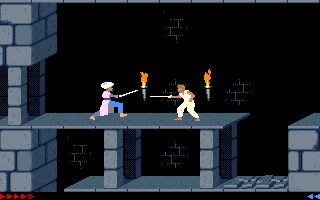Cinematic platformers represent one of the most distinctive and influential subgenres of the 1990s, characterized by fluid and realistic animations, cinematic atmospheres, and more deliberate gameplay compared to traditional action platforms. This genre emerged from developers' vision to create more immersive and visually spectacular experiences.
The movement began with Prince of Persia (1989) by Jordan Mechner, which revolutionized video game animation through rotoscoping technique, capturing real human movements to create the most fluid and believable protagonist ever seen. The game established the genre's pillars: precise movements, environmental puzzles, and strong emphasis on atmosphere.
Another World (1991) by Eric Chahi further expanded the concept, introducing integrated cinematic sequences and visual storytelling without dialogue that profoundly influenced the industry. Flashback: The Quest for Identity in 1993 perfected the formula with even more detailed graphics and refined gameplay mechanics.
In 1993, Prince of Persia 2: The Shadow & The Flame continued the original's legacy with more varied settings, while Blackthorne (1994) by Blizzard brought more aggressive action elements to the genre while maintaining the characteristic fluid animations.
These titles defined a game design approach that prioritized animation quality and atmospheric immersion over pure speed, creating unique experiences that remain influential today. The cinematic platformer genre demonstrated that video games could achieve movie-like presentation and emotional impact through careful attention to character movement, environmental storytelling, and dramatic pacing.








